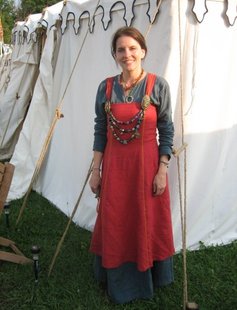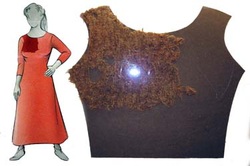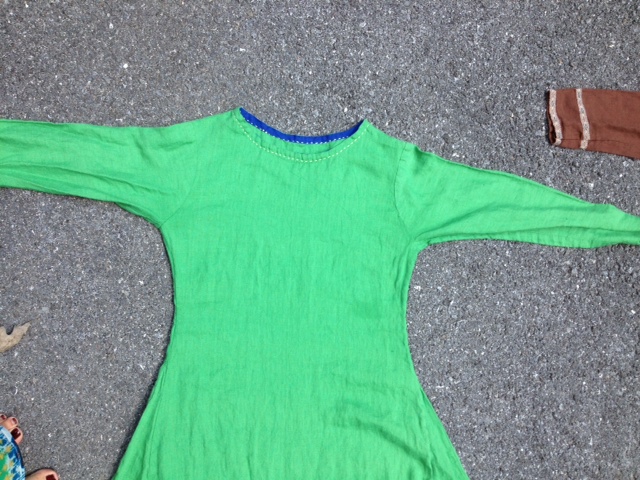
As you can see in the photo to the left, this cut of tunics works very well with my aprondresses. Despite already loving this style garment, I was curious to try the Hedeby style underdress as well. I most often choose a very fitted Hedeby style aprondress (curved side seams, potential for darts) and wanted to explore a possible complimentary underlayer.
The Hedeby underdress has set-in sleeves. Ironic given that when I started in the SCA I was told that early period garments never had set-in sleeves and that rectangular construction was the One Right Way to make a tunic. Set-in sleeves, I was told, was appropriate only for much later periods.

I started by taking the image of the extant fragment to the left and blowing it up and cutting my first mock-up. After two more rounds, with minor modifications each, I had a comfortably fitting body and moved on to tackle the sleeves.
Below you can see images of the standard rectangular cut tunic (brown) and a Hedeby style tunic (green). The Hedeby one, in this case, is actually sized a little larger than the Birka style dress. I made one a similar size, but it was so dark in color it did not photograph well.







 RSS Feed
RSS Feed